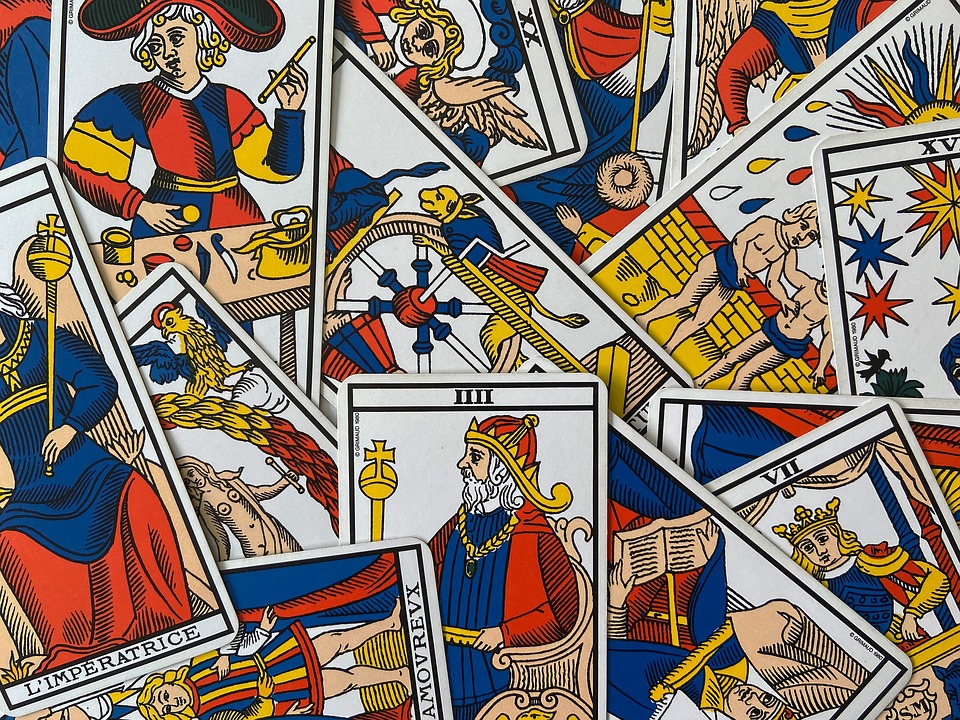The Ultimate Guide to Tarot Card Interpretation: Tips and Tricks
Tarot card reading has been a popular form of divination for centuries, offering a unique and insightful way to gain a deeper understanding of ourselves and our place in the world. However, mastering the art of tarot card interpretation can seem daunting, especially for beginners. In this article, we’ll delve into the world of tarot and provide you with a comprehensive guide to interpreting tarot cards, complete with tips and tricks to help you unlock the secrets of the tarot.
Understanding the Basics
Before diving into the world of tarot card interpretation, it’s essential to have a basic understanding of the tarot deck and its components. A standard tarot deck consists of 78 cards, divided into two main categories: the Major Arcana and the Minor Arcana.
- Major Arcana: The Major Arcana cards represent major life themes, archetypes, and spiritual lessons. They are numbered from 0 to 21 and include cards such as The Fool, The Magician, and The High Priestess.
- Minor Arcana: The Minor Arcana cards represent everyday situations, emotions, and experiences. They are divided into four suits, similar to a regular playing card deck: Wands, Cups, Swords, and Pentacles.
Interpreting Tarot Cards
Interpreting tarot cards requires a combination of intuition, knowledge, and practice. Here are some tips and tricks to help you get started:
- Start with the Question: Before laying out the cards, define the question or area of focus for the reading. This will help you stay focused and ensure that the interpretation is relevant to the situation.
- Use Your Intuition: Trust your instincts and allow your intuition to guide your interpretation. Don’t be afraid to think outside the box and consider unconventional meanings.
- Consider the Context: Take into account the question, the situation, and the surrounding cards when interpreting each card. The meaning of a card can change depending on the context in which it appears.
- Look for Patterns and Themes: Identify patterns and themes in the spread, such as repeated elements, colors, or symbols. These can indicate underlying messages or trends.
- Pay Attention to Card Positions: The position of each card in the spread can influence its meaning. For example, a card in the past position may indicate a past influence, while a card in the future position may indicate a future outcome.
- Use Your Knowledge of Symbolism: Tarot cards are rich in symbolism, drawing from mythology, astrology, and other esoteric traditions. Familiarize yourself with the symbolism associated with each card to deepen your understanding of their meanings.
Common Tarot Card Interpretation Mistakes
Even experienced tarot readers can fall into common pitfalls when interpreting tarot cards. Here are some mistakes to avoid:
- Taking the Cards Too Literally: Tarot cards often use symbolism and metaphor to convey meaning. Avoid taking the cards too literally, and instead, consider the underlying themes and messages.
- Ignoring the Question: Make sure to stay focused on the question or area of focus for the reading. Don’t allow the interpretation to wander off track or become too general.
- Overemphasizing the Negative: Tarot cards can sometimes indicate challenging or difficult situations. However, avoid dwelling on the negative and instead, focus on the opportunities for growth and transformation.
- Not Considering the Entire Spread: Tarot cards are meant to be read in context with each other. Avoid focusing too much on individual cards and instead, consider the entire spread and how the cards interact with each other.
Advanced Tarot Card!nterpretation Techniques
Once you’ve mastered the basics of tarot card interpretation, you can explore more advanced techniques to deepen your understanding of the tarot. Here are a few techniques to consider:
- Tarot Journaling: Keep a journal of your tarot readings, including the question, the spread, and your interpretation. This can help you track your progress, identify patterns, and refine your skills.
- Tarot Meditation: Use tarot cards as a meditation tool, focusing on the symbolism, imagery, and themes associated with each card. This can help you tap into your intuition and access deeper levels of consciousness.
- Tarot Combination: Experiment with combining tarot cards in different ways, such as pairing cards or creating unique spreads. This can help you develop new insights and perspectives on the tarot.
- Tarot Storytelling: Use tarot cards to tell stories and create narratives. This can help you tap into your creative potential and access new levels of meaning and symbolism.
Conclusion
Tarot card interpretation is a complex and multifaceted art that requires practice, patience, and dedication. By following the tips and tricks outlined in this article, you can develop a deeper understanding of the tarot and unlock its secrets. Remember to trust your intuition, consider the context, and look for patterns and themes in the spread. With time and practice, you’ll become a skilled tarot reader, able to tap into the wisdom and guidance of the tarot. So, start your journey into the world of tarot today, and discover the insights and revelations that await you!


Leave a Reply